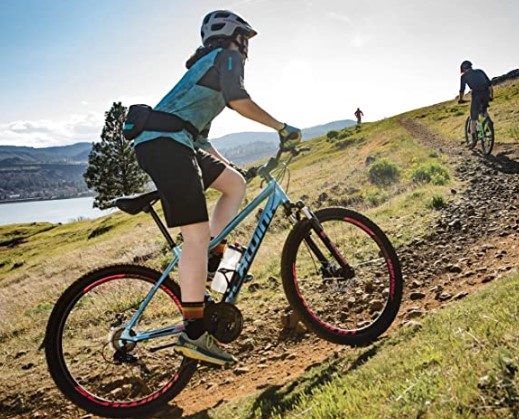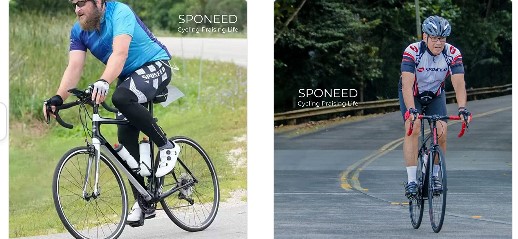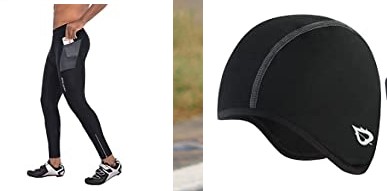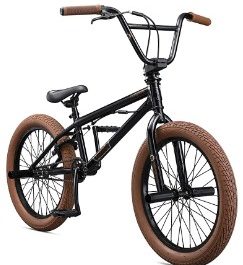Knowing your average biking speed can be the first step to understanding the time and distance a particular trip can take. So you’ve to ask, how long does it take to bike 6 miles?
It takes 16 – 20 minutes with a speed of 18 – 21 mph for a seasoned rider, 20 – 25 minutes with a speed of 14 – 17 mph for an intermediate cyclist, 26 – 30 minutes with a speed of 12 – 14 mph for a recreational rider, and 35 – 45 minutes with a speed of 8 – 10 mph for beginner riders to complete a 6-mile ride.
However, the time and speed also vary due to factors like the rider’s fitness, the weather conditions, the terrain, the type of bike, gear, and clothing, and the rider’s age.
In this article, we will discuss different bikers, their average speed, and the time they take to ride 6 miles. We will also discuss the factors affecting the time to bike 6 miles.
Read along!

Time-wise, How Long Does It Take to Bike 6 Miles?
Different Bikers, Their Average Speed and Time to Ride 6 Miles.
Bikers vary in average speed, meaning their time to cover 6 miles will also differ.
While top-notch seasoned cyclists will take less time to tackle 6 miles, beginners are likely to struggle to complete 6 miles, and thus, they will take more time, as shown in the table below:
| Rider Level | Top Speed (In mph) | Time To Cover 6 Miles (In Minutes) |
| Seasoned cyclists | 18 – 21 | 16 – 20 |
| Intermediate riders | 14 – 17 | 20 – 25 |
| Recreational bikers | 12 – 14 | 26 – 30 |
| Beginner riders | 8 – 10 | 35 – 45 |
Since the above table is self-explanatory, let us now discuss the factors that affect the time to bike 6 miles.
Factors That Affect Biking Time
1. Fitness of The Rider
Physical fitness matters when it comes to cycling. The more fit you are, the shorter the cycling time, and vice versa.
However, don’t be discouraged if you feel you are not fit enough. You can try strength exercises for cyclists, like leg lifts, burpees, lunges, front squats, single-leg deadlifts, renegade rows, and kettlebell swings, among many others.
One more thing, if you are a beginner, your chances of cycling faster are always slim. However, you can achieve tremendous speed by starting slowly while increasing your speed steadily. It’s also good to note that you will likely get fatigued, so it’s advisable to exercise frequently.
2. Weather Conditions
Another factor that affects your cycling speed is the weather. Let’s discuss three primary weather conditions you are likely to encounter.
The first is in windy conditions. Well, wind can be your foe or friend.
Wondering how? It becomes your enemy when riding against the headwind as it pushes you backward, significantly affecting your speed.
However, it becomes your buddy when riding in the tailwind. This is because it positions you forward, and you can hit that speed you admire.
What about during the rain? Well, rain affects your visibility. This is not a good sign as it can make you fall or cause an accident. On the other hand, when it’s rainy, the paths will be muddy, wet, and slippery, so it will require hard work to attain a reasonable speed.
Lastly, there are scorching weather conditions. This limits your speed as the solar heat can cause exhaustion, and the sun will not be kind to your skin.
Therefore, it is advisable to know the daily weather forecast of your area as this will help you understand the best time to ride.
3. The Terrain
Knowing the terrain, you are planning to ride is essential as it will determine how fast you will cover a mile or two.
For example, when riding on flat tarmac, it’s undoubtedly to be easy. You will likely bike 6 miles on flat terrains in 25 minutes, which is incredible.
But if your terrain is rough, full of potholes, or challenging to maneuver will a lot of ups and downs, or even uphill terrains, chances are that you are more likely to pedal harder, which will also take more time and energy.
Compared to someone who rides 6 miles on a flat road uses 25 minutes, one riding on uphill terrain is likely to use 45 minutes. That’s much time!
But what about the downhill terrain? These terrains are the easiest to tackle. The truth is that you are likely to use less time and energy. You are likely to be using freewheel, or shall I say free, gear!

4. Type of Bicycle
The type of bike you choose will affect the time and the performance you will get from your ride.
Nowadays, there are many bike types, each with a unique purpose. Let’s discuss four types, namely, Road bikes, Mountain bikes, Cruiser, and touring bikes.
Below is a table showing their differences, which will help you know which type suits you.
· Road Bikes
Road bikes are your all-around when you want to ride fast on flat terrains like paved roads. They come with thin tires, a shorter wheelbase, and drop bars for an aerodynamic ride.
Moreso, you’ll find road bikes in different sizes to fit all riders. That said, road bikes are meant for speed. As a seasoned rider, you can expect to average 17 – 18 mph and tackle 40 – 60 miles.
But with the many road bike options, choosing one can be a doubting task. Well, I have done the homework for you.
One of the best recommendations in this category is the Schwinn Volare Men’s And Women’s Road Bike (Check on Amazon). This 28-inch wheel bike is suitable for 64 – 74-inch-tall riders.
It has an aluminum frame that makes it lightweight, while its 21-speeds give you excellent gear shifting and a smooth ride.
· Mountain Bikes
If your terrain is rough or with potholes or even hilly, or your go-to bike should be comfortable, then a mountain bike ticks all these boxes.
You can use your mountain bike for street riding, ramp cycling, or for dirt racing. However, in matters of speed, mountain bikes are incomparable to road bikes.
On average, you can expect to hit 15 – 20 miles cycling at ten mph with a mountain bike. So, in short, they dwell more on comfort than speed.
But if you want a bike to transverse rough terrains, then the cycle in your arsenal is a mountain bike. Our top recommendation is the Schwinn High Timber Adult Mountain Bike (Check on Amazon).
This adult mountain bike comes with 21 speeds for more effortless gear shifting and an alloy steel frame, making it durable and comfortable to ride.
· Cruiser Bikes
Cruisers, popularly known as beach cruisers, are your ideal bike when you want to stroll around the beach or go shopping.
The best part about these bikes is their wider wheels and larger back seats, not to forget the upright bars that give you a scenery view.
What about speed?
Well, beach cruiser bikes can comfortably hit 15 miles on average with a 12–15 mph speed.
· Touring Bike
When wanting to take a long tour, you need a bike to endure the long trip seamlessly. That’s what a touring bike promises.
Touring bikes have a solid frame and robust structure necessary for cargo carriage. Though you may think these bikes are the fastest option you can find, that it’s not the case. However, they are not lazy.
On average, you can expect to hit 30 – 60 miles at a top speed of 13 – 14 mph.
5. Gear and Clothing.
When it comes to clothing, note that heavy clothing like a jacket and jeans are likely to add weight, which means that you will drag behind.
So, it’s advisable to embrace the pro cyclist clothing. Maybe you wonder what they wear? Usually, they wear spandex (Check on Amazon) that reduces their weight and a streamlined helmet (Check on Amazon) that cuts against the wind.
What about the equipment that you carry along? For example, when you have a bike with a basket and carry some essentials, then know that the extra weight causes your speed as you will cycle using more energy, which also involves more time.
The right gear depends on the weather and the traveling conditions.
Climate fit and technical fabrics are recommended as they ease movement, reduce wind resistance, and are more comfortable to ride in.
Heavy clothes are unsuitable for cycling as they hinder easy riding movement.

6. Age Factor.
Age also matters when it comes to biking 6 miles. An older person cannot bike like a young person.
However, we are not saying that older folks are discouraged from cycling. No! They are encouraged to ride bikes to improve their overall body health and physical fitness.
However, a younger person will most likely take less time, while an older person will take more time.
People Also Ask
1. How Long Will It Take to Bike 9 Miles?
This depends on the terrain, type of bike, physical fitness of the rider, road conditions, the age of the rider, and the clothing they put on.
However, if the rider is physically fit, has a road bike, and is a professional rider, it will take him 33 to 44 minutes to complete a 9-mile ride.
2. How Long Will It Take to Bike 5 Miles?
Though the factors discussed above may have a say on the time a biker can take to complete a 5-mile ride, it will take 21 to 33 minutes at an average speed of 9 to 14mph for a pro rider to achieve such a distance.
3. How Long Will It Take to Bike 8 Miles?
For an average rider who is physically fit, it can take about 48 minutes or thereabout, depending on the terrain, type of bike, fitness, and age.
However, pro riders can take a shorter time with the proper clothing. But for beginners, expect them to use more than 48 minutes to complete the same ride.
In conclusion, how long does it take to bike 6 miles?
As we have discussed, it can take 16 to 20 minutes at an average 18 – 21 mph speed for pro cyclists to tackle a 6-mile journey.
Nevertheless, factors like the rider’s fitness, weather conditions, terrain, type of bicycle, gear, clothing, and age significantly affect the speed and time taken to cover such a journey.
Relevant Posts:

